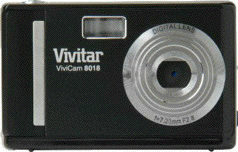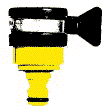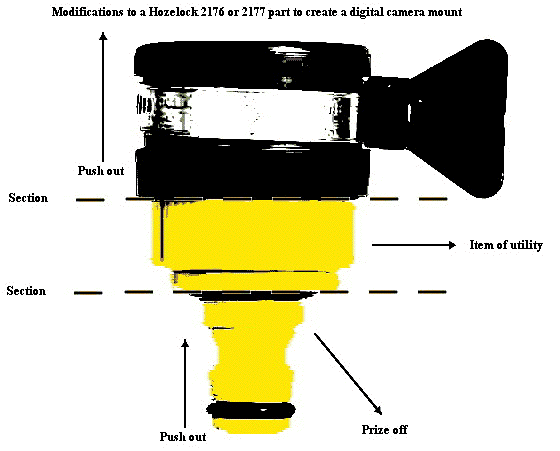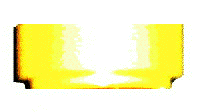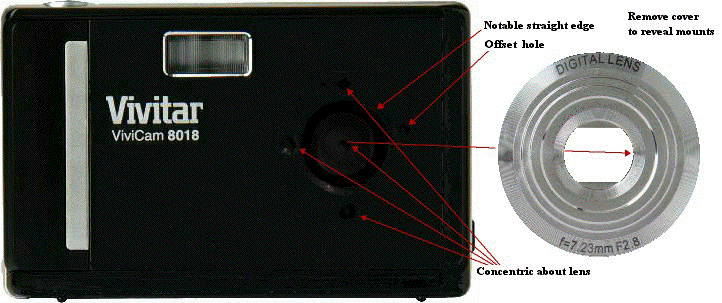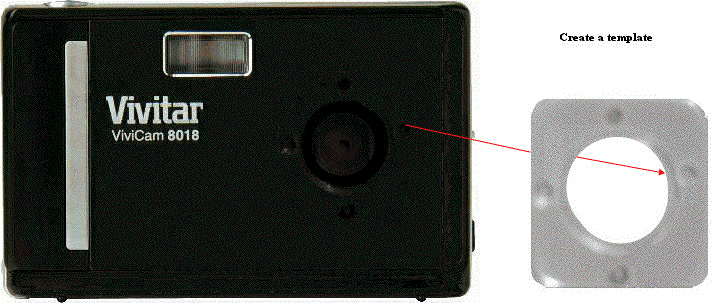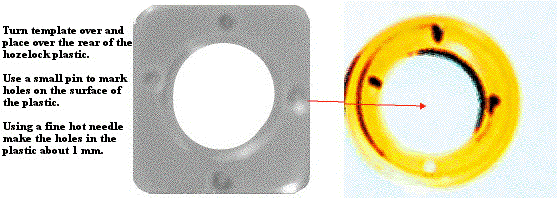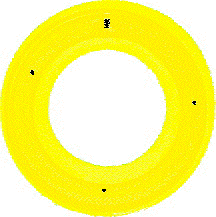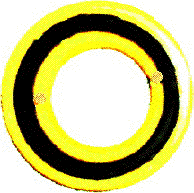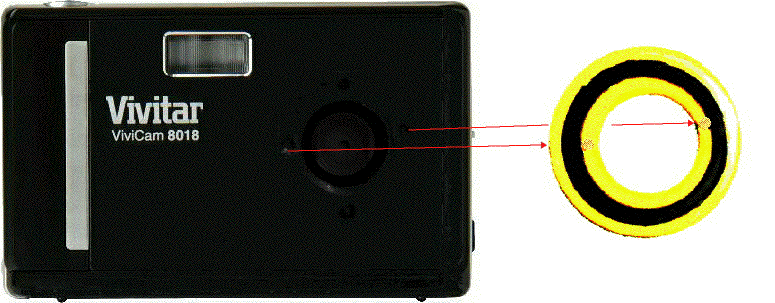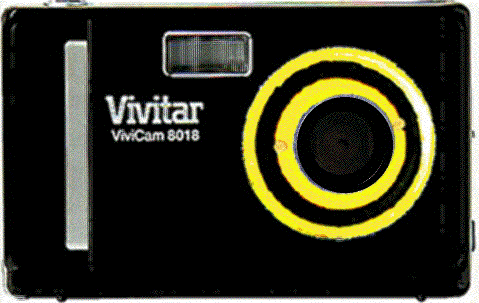| This project began two years ago, after reading an article about connecting a Logitech™ Web cam to a microscope, on Micscape. I have several persistent incapabilities in the arena of computing. First, I can't use a computer unless it has an Apple badge, and runs the traditional Apple Mac Operating System. Second, like, I guess, many, that are interested in microscopes, and who are reading this article, I suffer from extreme bouts of Coulrophobia (fear of Clowns turning up with some kind of upgrade that requires a new operating system), aggravated by (Adobephobia, the frustration to find that Adobe pdf file formats have deviated from their own original standards and won't open unless they are created without multimedia.) Adobephobia is more common among archivists and librarians than any other working cohorts when they do Google searches with a -*.pdf suffix to cut out seven times of nonsense from appearing is search results, or when they find their archive files don't open because Adobe altered the original PDF standard. But it is Disposophobia: (fear of the objects not being found due to stalls and confusions) that is more common among readers of web pages dependant upon Java scripting technology. Sometimes, these phobias, especially Magnophopia, (fear of anything associated to Java™, Sun Microsystems™, or java scripting™ and object orientated programming), can be life threatening, as they leave me hunting my Jugular in complete contemplation of that Vapid Void of Vacancies that appear with errors before my eyes, and especially when presented with even the hint of demands to change my existing learned capacities, or browser technologies, which ostensibly continue to work well if left alone. So after reading, with interest, the article about connecting a Logitech™ camera to a microscope, I became inspired to do likewise: I was sure of success: after all, what could go wrong? Logitech™ originated from Connectix™, Connectix™ developed for Mac OS, and yes there did appear to exist old Connectix™ drivers that promise to run on the Mac OS Classic. I could interface a camera from resources from my old junk driver archives. So I off I trotted, and bought a Quickcam™. Imagine, my horror to find, YOU CAN HAVE ANY DRIVER AS LONG AS IT'S NOT FOR MAC OS CLASSIC, on a 1.3 Mpx Camera. I knew this was not true. I knew the Web camera range of the 1990's before Logitech™ bought Connectix™: so why the Federal obstruction? Well, after trying 3 cameras in the range, I called things a real Christ m arse Day. The problem, as it became apparent to me, was that Logitech™ Cameras used to be made by Philips™, but when manufacturing transferred to China, Philips™ made the software Product ID number completely incompatible to the new camera range: ode for the joy of the jesters! It was then, after 3 weeks of messing about, that I had my first bout of stress, and was declared formally, a Complete and utter Coulrophobe! This was devastating news. I had done my time at University, read my English cannons, contemplated my CPC exams, sat my dinners in Macdonald's™ in Grays in Road, planned my routes to the Bar: I was all set up for a successful bout on the Jury Practice, only to discover my morbid fear of the Circus: all notions of a career as a Justice of the Peace, gone: I was shattered. I contemplated retraining, I contemplated the forthcoming Olympics, maybe I could make something of myself as a competitive cyclist, then I thought of the circuit, the training, and that just reminded me of Clowns on disproportionate cycles: I had a panic attack, all the deep breathing exercises, the calming techniques, failed and faltered and I was just left with that overwhelming desire to have another cigarette and relax. I was the lucky one, for me there was an expert therapist working in our local branch of Wallmart™: As I grew to contemplating my Camera woes while out for a stroll around the Asda™ stores, (that's Camera photography woes not Campaign for real ale woes) a very kind fellow introduced me to a Vivitar™ Camera, called a Vivicam™ 8018. And then, very swiftly, all my problems seemed resolved: the Clowns had gone away, and when I got home, the Camera just turned up on the desktop as a disk unit, and I could transfer my pictures to my computer: oh the relief, I almost felt like giving up smoking altogether, but this was only the first steps along that long and well travelled path to achieve picture graphical interfacing to standards to Mac OS. I was extremely pleased with the product, and the better resolution of the camera was a real bonus to me. I learn now, that similar cameras in the range extend to 12 Mpx and perhaps even more. So my first tentative steps at photo microscopy comprised of placing the flat lens of the camera against the ocular. Using a 15 X Huygens ocular is most problematic, as even the smallest shake of the hand caused blurring or alignment offsets. The biggest problem with this method is the limited field of view apparent on the photograph. One day, when I was doing this, the front plate of the Vivicam™ literally fell off in my hands. What I discovered under the front plate were four mounting holes: the front plate had simply rested in its place within these holes: hey, I thought, I am well blessed, my sins are diminished, maybe Vivitar™ make a mounting accessory for me. And when I placed the ocular to the Camera lens minus the cover, the field of view improved. So I became even more motivated to explore what means existed to mount the camera to oculars of telescopes and microscopes at Vivitar™. Alas, after much searching, I found there was none: I felt the slight pangs of Coulrophobia again, as I contemplated how possibly I could achieve this interfacing task. I read extensively. I checked all the supplies and suppliers. The more I looked the worse IT got, and situation appeared even more complex while out looking for items at the shops. The Coulrophobia was getting worse. My therapist put me on a course of Hamburger therapy: which basically involves sitting in a Macdonald's™ restaurant, quietly with platters of Cheese burgers and Chicken Mayo's and Hamburgers, with lots of stiff coffees and hard thinking: this socialization experience really helped, it displaced all my fears and woes of Clowns, and as I ate my tucker in the safe secure environs of the restaurant, I gradually got the feeling that not all Clowns are bad, and that in Macdonald's™, at least, I am among some really are good people. So after exploring the abundance of fixtures and fittings, on the Brunel™ web site, I became resolved that ALL DIGITAL CAMERAS appear to be different in their mounting provisions: but for Vivitar™, there must be more chance than most of achieving some success. It took 18 months from my initial outset to recover enough motivation to select the best interfacing method, and during this time, I was always on the lookout for something to achieve the task: but yet nothing turned up on the Google search engine. Finally, this month, I found myself making the decision that to successfully interface the Digital Vivitar™ Camera to a the 23.2 mm ocular with 27.8 mm rim that is found on many student microscopes, I would have to achieve this from my own efforts. My first efforts involved obtaining a small metal engraving plate from the Shoe repair shop. I set about with needle files crafting the plate to size, had the large hole punched through to 21 mm by our local precision engineering specialist Mr. Latham, of Deimos™ Components, and Zincsmart™: the marine engineering specialist at Canterbury. This appeared to me to be the easier method: the thickness of the plate matched the camera metalwork. |
|
|
| The initial plan was to unscrew the barrel from the rim of the ocular and site the plate on one of the intermediate threads. The problems associated with this method were threefold. The eyepiece rims obscures the mounting fixings. The hole in the main camera cover is smaller than the ocular rim. The metal is too thin to provide for a screw thread. The notable straight edge on the picture below shows clearly the first problem. |
|
|
| Having created a metal template, I proposed a solution of simply recreating the plate with greater depth using Perspex™. This might have allowed for some kind of thread, or for the routing of a stepped hole to accommodate the rim and then smaller to accommodate the barrel. The problem I discovered at this stage was that the rim of the ocular exceeds that of the patterned lattice of mount fixings. I also discovered that one hole is offset from the other three of the camera face. So basically these simple approaches were not going to yield a successful result. The following method describes the final and forth attempt at providing a fixed lens mounting for this camera. (My third attempt involved the use of a Hozelock™ tap adapter for screw threaded taps, and failed, due to the rim size being too thin. I saw the Clowns again that night, things were getting bad!) As I thought about the Clowns, I thought about the acrobatics, I started to see frogs leaping out at me, like Clowns trying to avenge themselves after failed dissections: I was becoming slowly, a Ranaphobe. |


